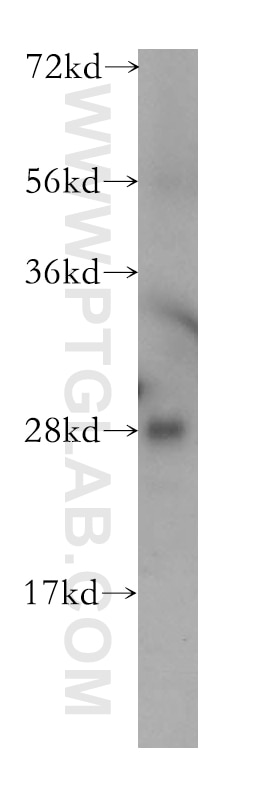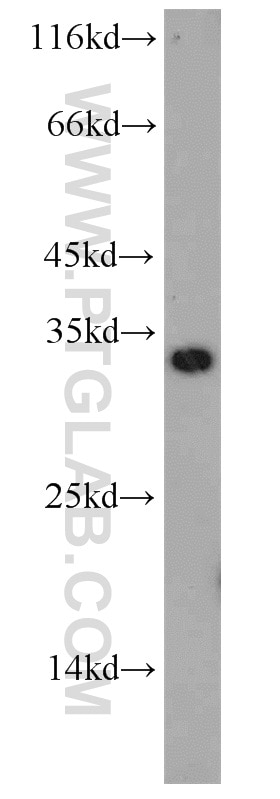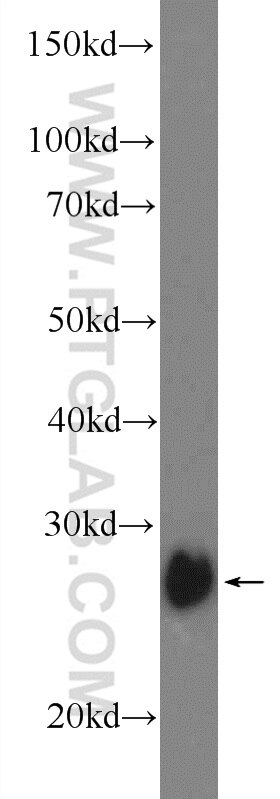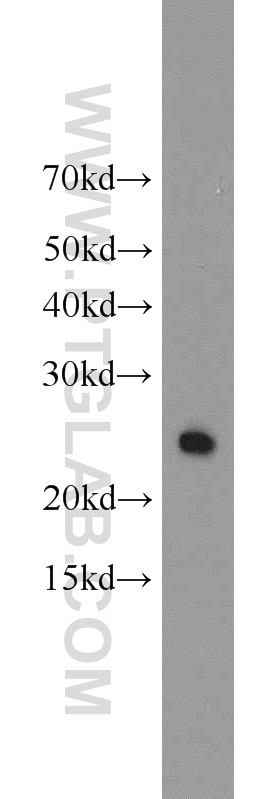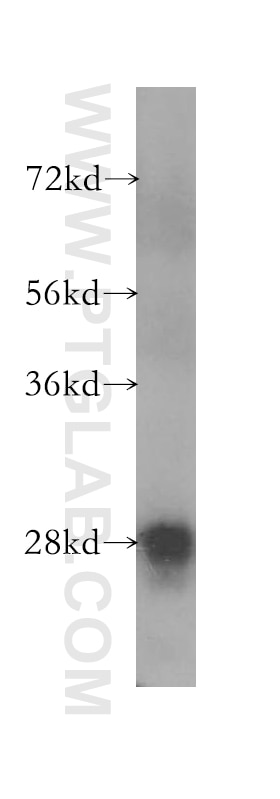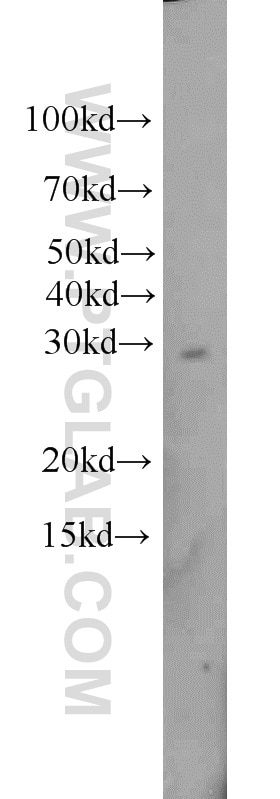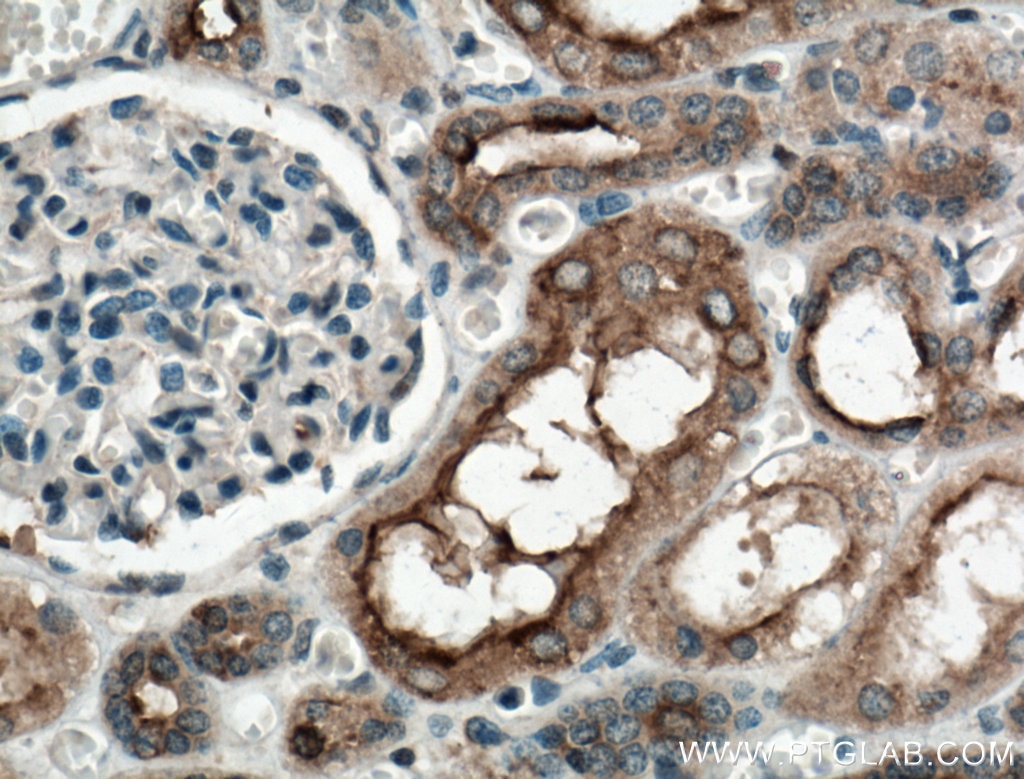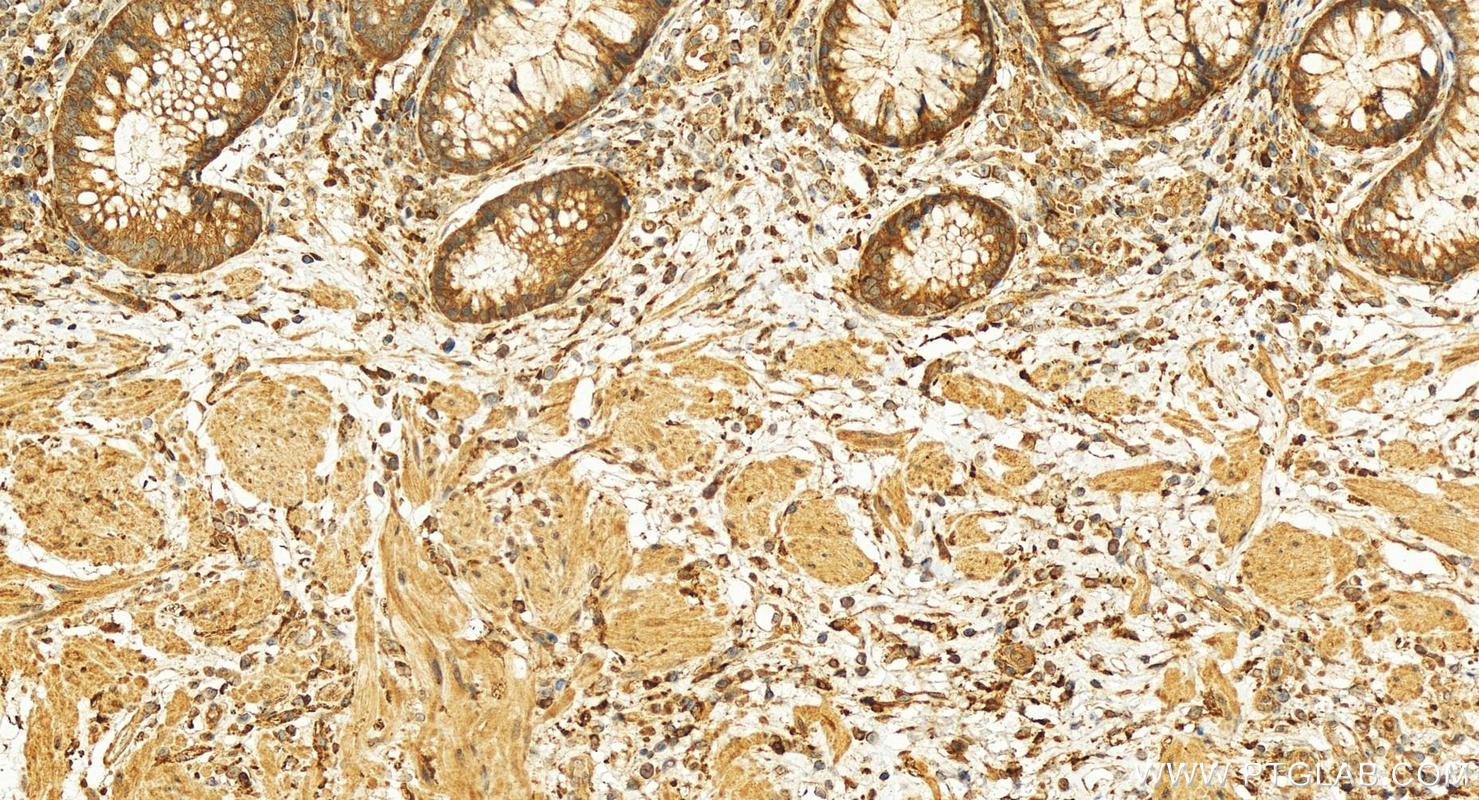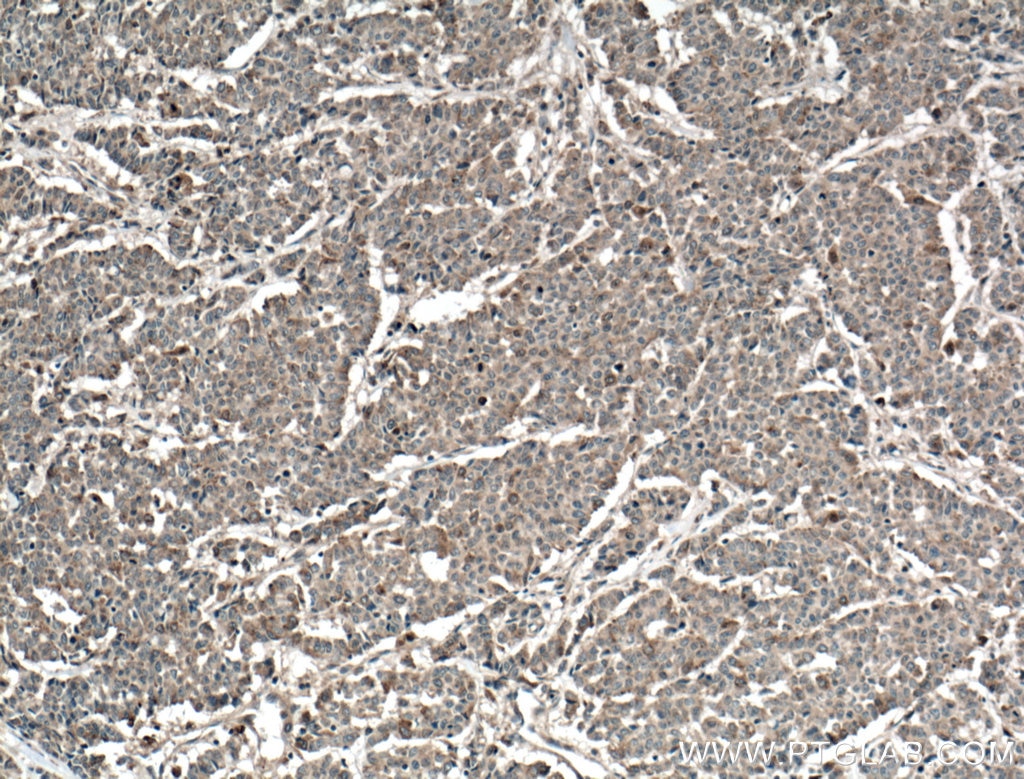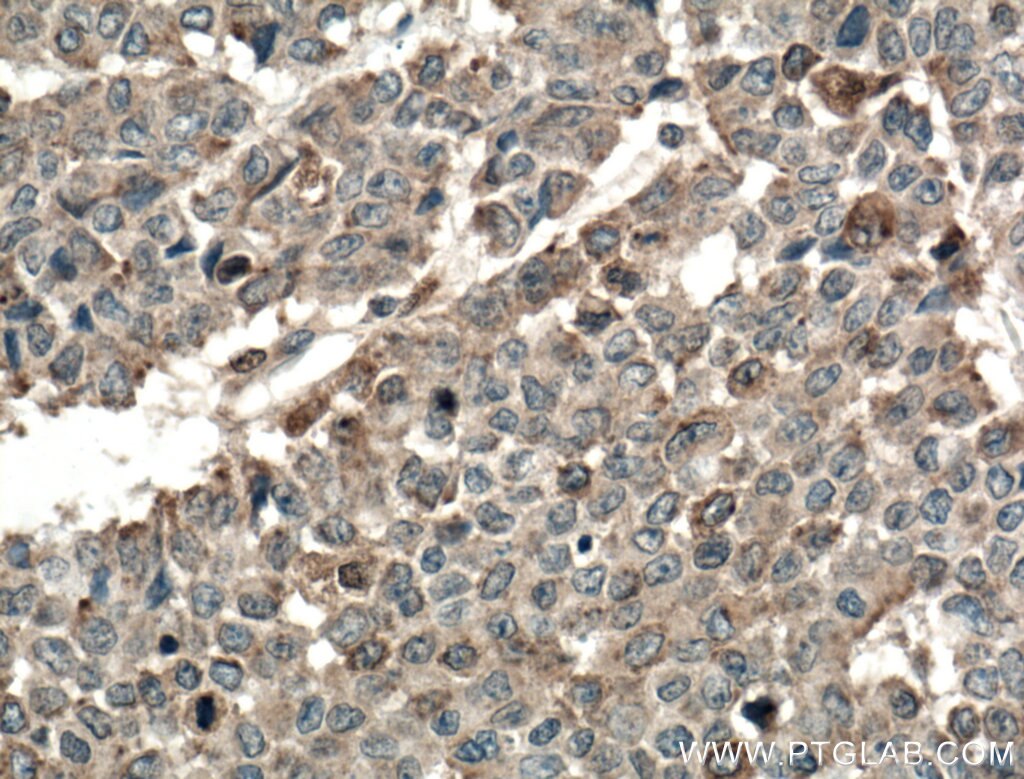- Phare
- Validé par KD/KO
Anticorps Polyclonal de lapin anti-TPK1
TPK1 Polyclonal Antibody for WB, IHC, IP, ELISA
Hôte / Isotype
Lapin / IgG
Réactivité testée
Humain, rat, souris
Applications
WB, IHC, IP, ELISA
Conjugaison
Non conjugué
N° de cat : 10942-1-AP
Synonymes
Galerie de données de validation
Applications testées
| Résultats positifs en WB | cellules SH-SY5Y, cellules HEK-293, cellules L02, tissu d'intestin grêle de rat, tissu d'intestin grêle de souris, tissu d'intestin grêle humain, tissu rénal de souris, tissu testiculaire de souris |
| Résultats positifs en IP | tissu rénal de souris |
| Résultats positifs en IHC | tissu rénal humain, tissu de cancer du côlon humain il est suggéré de démasquer l'antigène avec un tampon de TE buffer pH 9.0; (*) À défaut, 'le démasquage de l'antigène peut être 'effectué avec un tampon citrate pH 6,0. |
Dilution recommandée
| Application | Dilution |
|---|---|
| Western Blot (WB) | WB : 1:1000-1:8000 |
| Immunoprécipitation (IP) | IP : 0.5-4.0 ug for 1.0-3.0 mg of total protein lysate |
| Immunohistochimie (IHC) | IHC : 1:200-1:800 |
| It is recommended that this reagent should be titrated in each testing system to obtain optimal results. | |
| Sample-dependent, check data in validation data gallery | |
Applications publiées
| KD/KO | See 1 publications below |
| WB | See 10 publications below |
Informations sur le produit
10942-1-AP cible TPK1 dans les applications de WB, IHC, IP, ELISA et montre une réactivité avec des échantillons Humain, rat, souris
| Réactivité | Humain, rat, souris |
| Réactivité citée | rat, Humain, souris |
| Hôte / Isotype | Lapin / IgG |
| Clonalité | Polyclonal |
| Type | Anticorps |
| Immunogène | TPK1 Protéine recombinante Ag1404 |
| Nom complet | thiamin pyrophosphokinase 1 |
| Masse moléculaire calculée | 28 kDa |
| Poids moléculaire observé | 28 kDa |
| Numéro d’acquisition GenBank | BC014552 |
| Symbole du gène | TPK1 |
| Identification du gène (NCBI) | 27010 |
| Conjugaison | Non conjugué |
| Forme | Liquide |
| Méthode de purification | Purification par affinité contre l'antigène |
| Tampon de stockage | PBS with 0.02% sodium azide and 50% glycerol |
| Conditions de stockage | Stocker à -20°C. Stable pendant un an après l'expédition. L'aliquotage n'est pas nécessaire pour le stockage à -20oC Les 20ul contiennent 0,1% de BSA. |
Informations générales
TPK1(Thiamin pyrophosphokinase 1) is also named as PP20(placental protein 20) and belongs to the thiamine pyrophosphokinase family. It is a cellular enzyme involved in the regulation of thiamine metabolism and catalyzes the conversion of thiamine, a form of vitamin B1, to thiamine pyrophosphate (TDP, or TPP). There is no difference in TPK1 expression in cultured fibroblasts from normal subjects or from patients with thiamine-responsive megaloblastic anemia(PMID:11342111). It can exsit as a dimer(PMID:21552434). Defects in TPK1 are the cause of thiamine metabolism dysfunction syndrome type 5, episodic encephalopathy type (THMD5).
Protocole
| Product Specific Protocols | |
|---|---|
| WB protocol for TPK1 antibody 10942-1-AP | Download protocol |
| IHC protocol for TPK1 antibody 10942-1-AP | Download protocol |
| IP protocol for TPK1 antibody 10942-1-AP | Download protocol |
| Standard Protocols | |
|---|---|
| Click here to view our Standard Protocols |
Publications
| Species | Application | Title |
|---|---|---|
Sci Adv Dietary thiamine influences l-asparaginase sensitivity in a subset of leukemia cells.
| ||
Proc Natl Acad Sci U S A OCT1 is a high-capacity thiamine transporter that regulates hepatic steatosis and is a target of metformin. | ||
Oncotarget Identification of vitamin B1 metabolism as a tumor-specific radiosensitizing pathway using a high-throughput colony formation screen. | ||
Am J Pathol Identification of aurora kinase B and Wee1-like protein kinase as downstream targets of (V600E)B-RAF in melanoma. | ||
Sci Rep Thiamine metabolism is critical for regulating correlated growth of dendrite arbors and neuronal somata. | ||
PLoS One Metabolic effects of acute thiamine depletion are reversed by rapamycin in breast and leukemia cells. |


